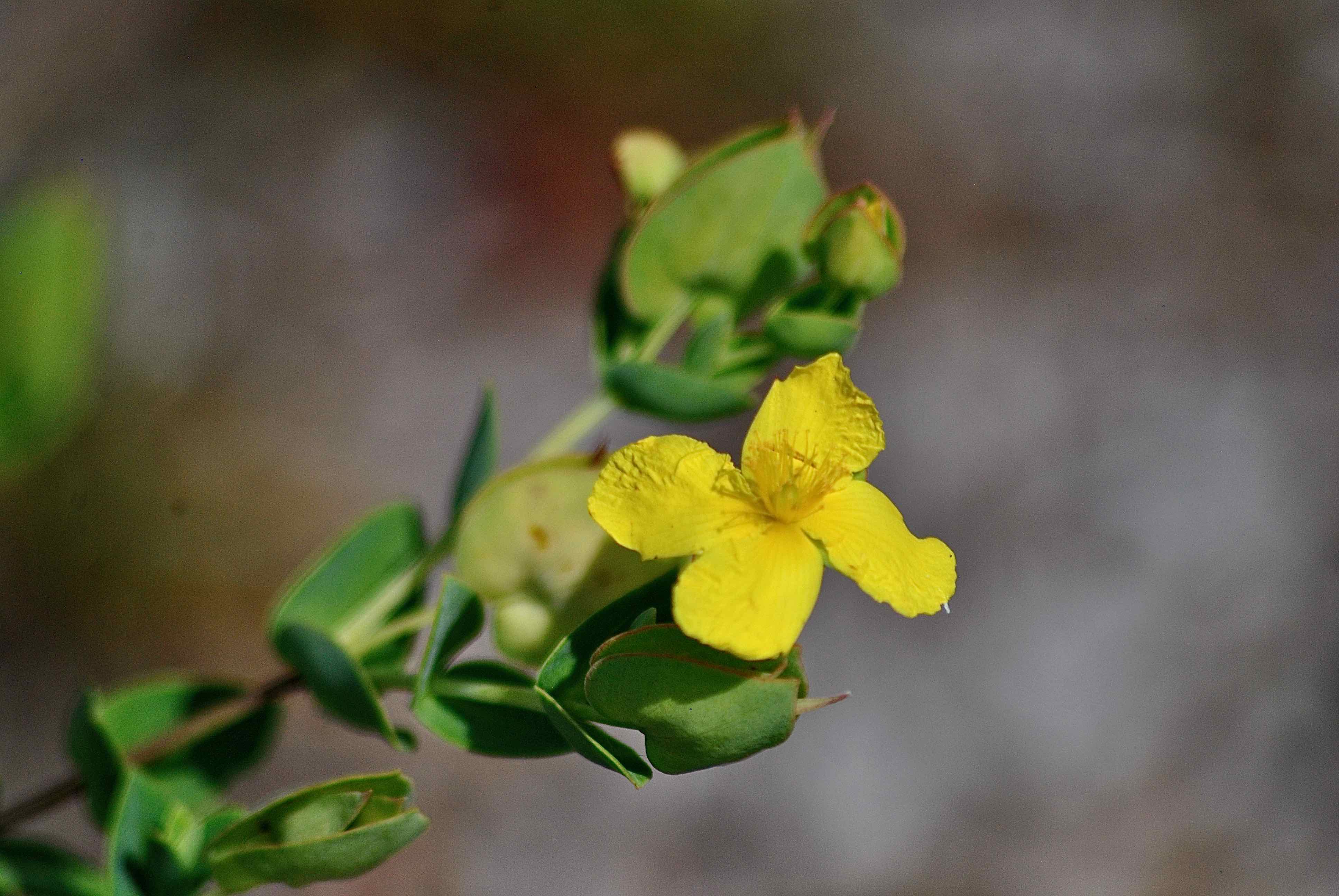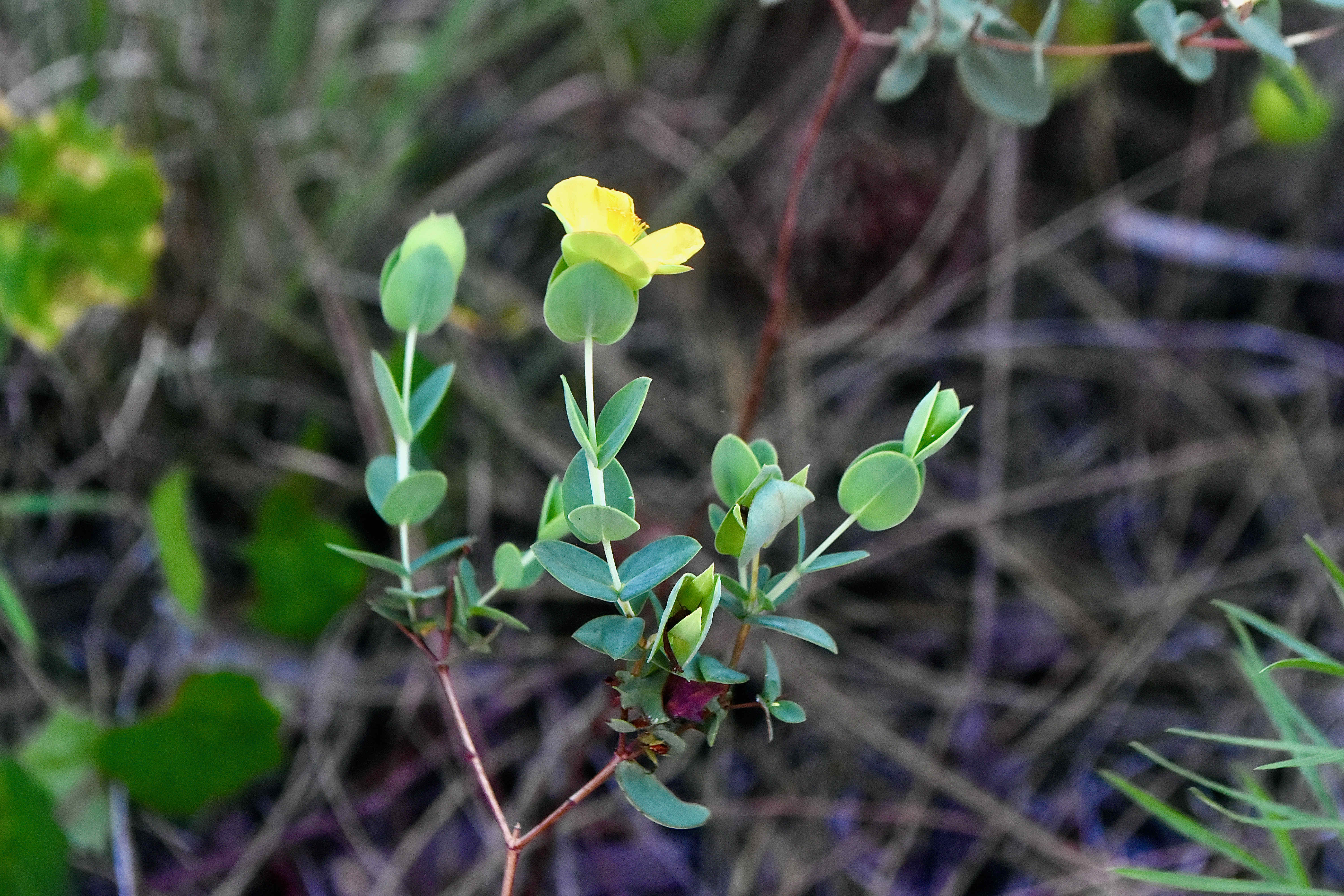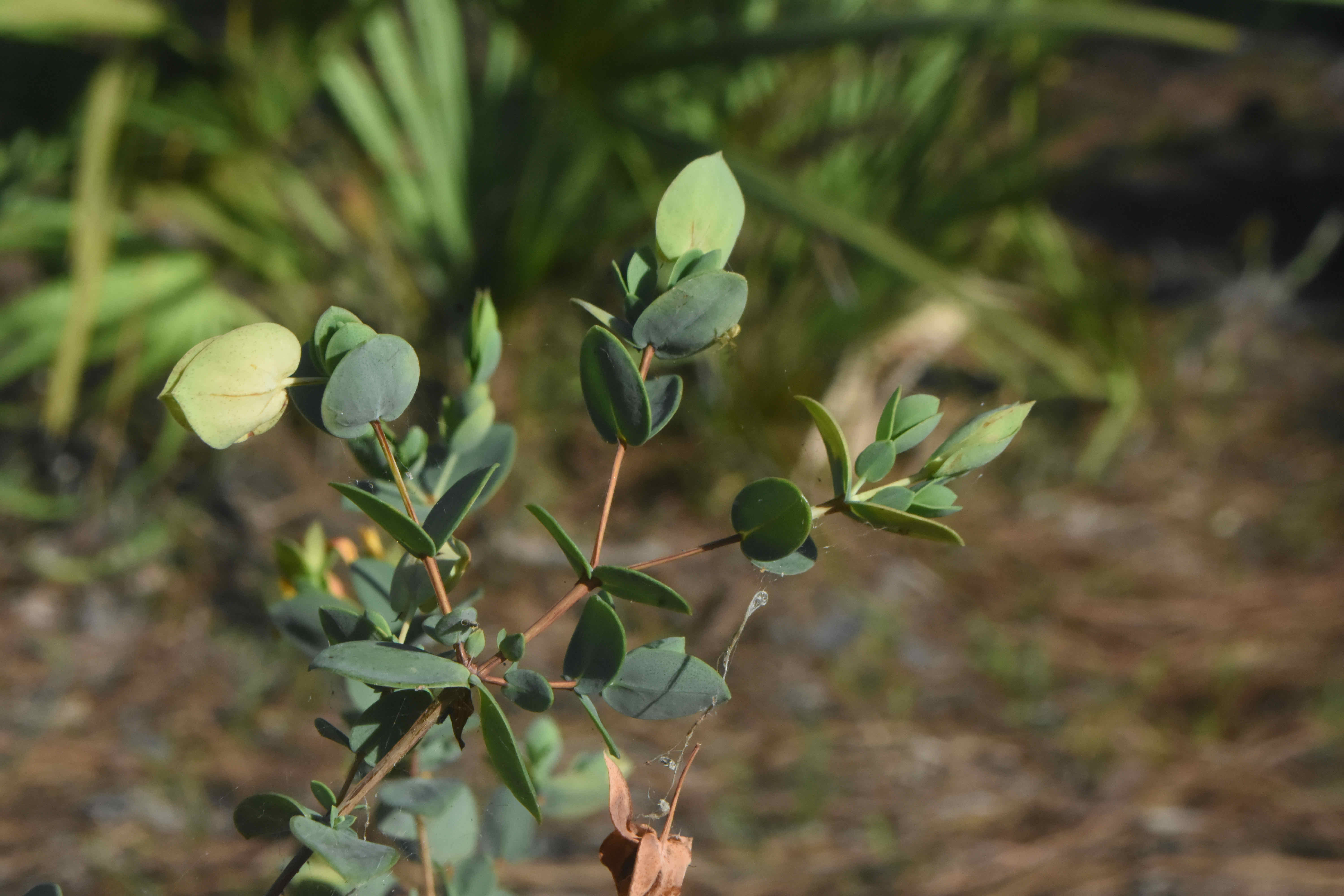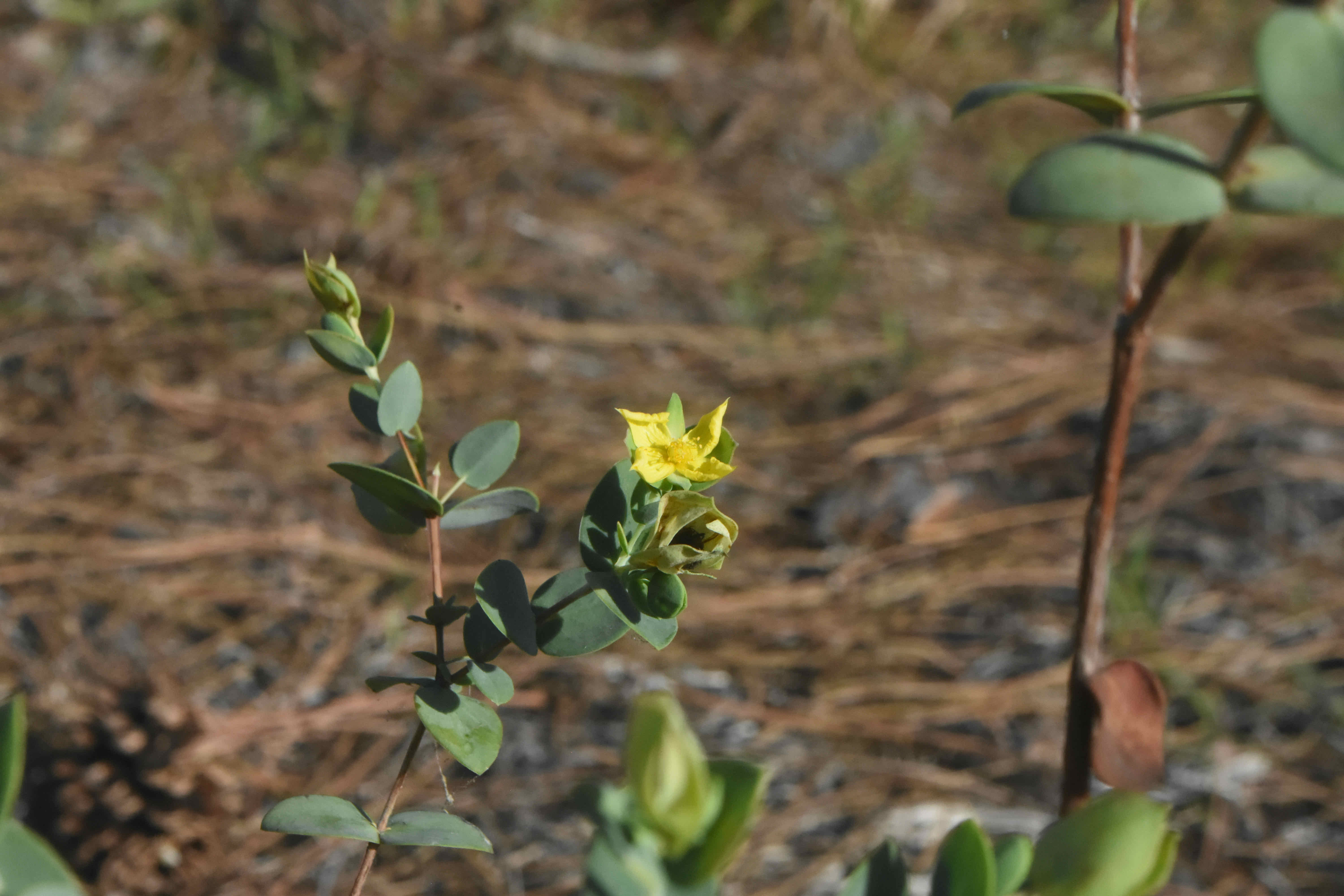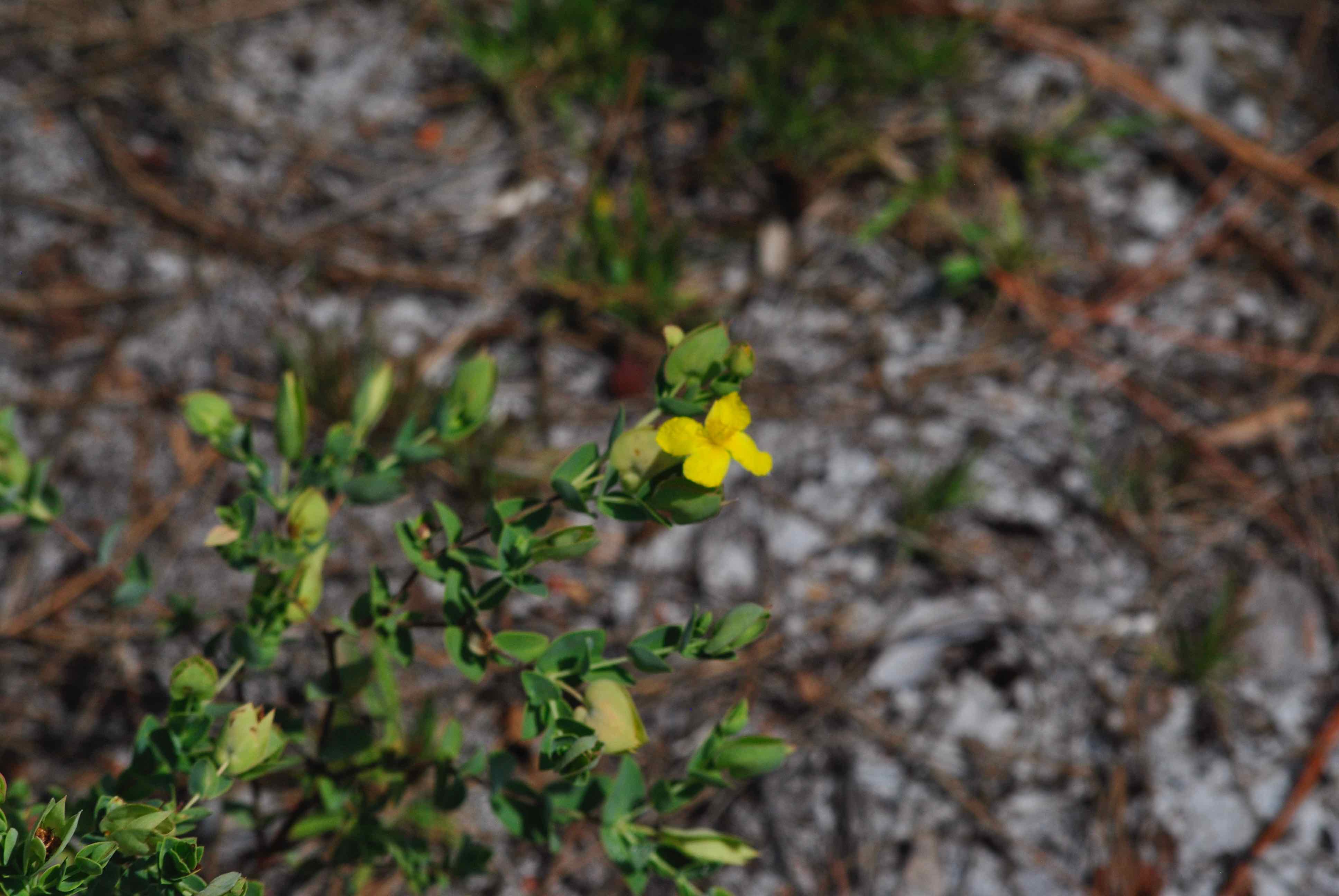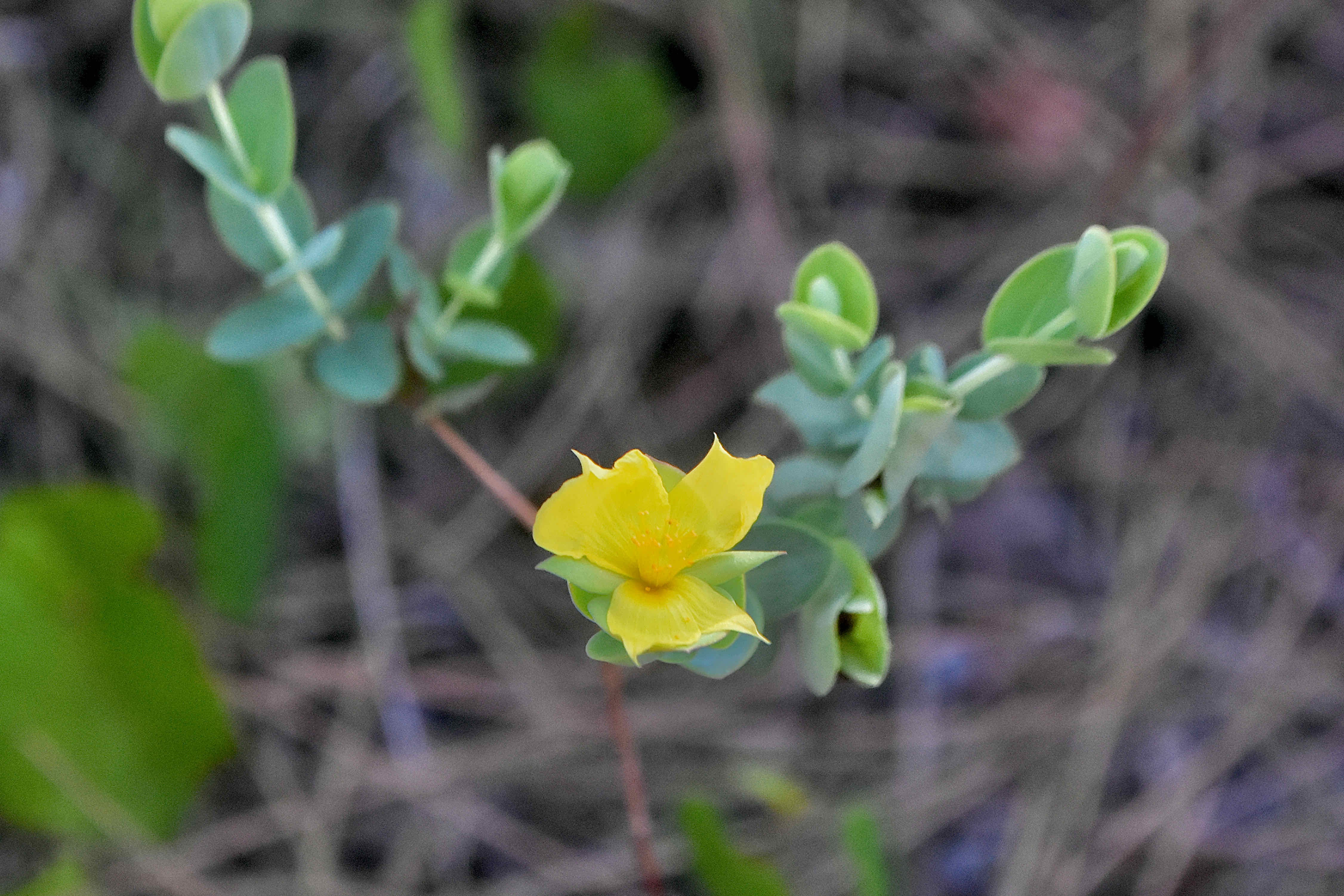
Fourpetal St. John's wort, photographed at Yamato Scrub Natural Area, Boca Raton, Palm Beach County, in April 2021.
Fourpetal St. John’s wort, Hypericum tetrapetalum, can lift you out of the blues but not in the way you might think. Plant it in your garden; hike through some pine flatwoods, and take in its bright lemony-yellow flowers.
Just don’t ingest it.
Unlike its European cousin, Hypericum perforatum, which is the most frequently sold herbal supplement in the United States and well known for its antidepressive effects, fourpetal St. John’s wort has no medicinal value at all. In fact, using it actually might be harmful. More on that in a bit.
Fourpetal St. John’s wort is a Florida native found throughout most of the Sunshine’s State’s 67 counties. It is absent from Collier County, the Keys and several counties in Florida’s northern tier. It is found in a few Georgia counties and also Cuba. It's a fairly common plant in our region.
There are something like 800 St. John’s wort species worldwide, 457 of which are members of Hypericum. Thirty-one species can be found within Florida, a dozen or so can be found in our end of the Peninsula. They’re so similar to each other that it can be difficult to separate individual species. But most St. John’s worts have five petals, so our guy’s four petals stand out and provide a pretty good starting point as to its identity.
Habitat also helps. Most other St. John’s wort species prefer wet places; fourpetal St. John’s wort certainly likes it on the moist side but it can be found growing in drier places that many of its cousins wouldn’t tolerate.
Fourpetal St. John’s wort blooms year-round but peaks spring into the fall. Its fruit is a capsule. The plant itself is woody shrub, two to three feet tall, mostly upright but it can be prostrate as well. It has few branches. The leaves are sort of oval to roundly triangular in shape, sort of like the business end of a shovel. They are arranged opposite each other along the stem, the margins, or edges, are smooth, or entire in botanical terms. The leaves are a pale green and curve upward and inward, sort of like a cupped hand.
The belief that St. John’s worts have healing powers dates back to ancient times. Both Greek and Roman physicians used the plant to treat a variety of ills. The genus name, Hypericum, is Latin, originating in Greek, and reflects the ancient belief that the plant was a gift from the gods.
Common St. John’s wort first blooms about the time of the summer solstice, and the Greeks and Romans to mark that date, would toss the flowers into a fire as a way of showing their thanks to the gods. Coincidentally, June 24, just days after the solstice, happens to be St. John’s Day, the birthday of John the Baptist, so early Christians took to calling the flowers St. John’s wort in honor of the martyred saint. Wort, by the way, means plant. The reddish substance produced when leaves were crushed became known as St. John’s blood. With the ascension of Christianity and the decline of the Greek and Roman religion, the name stuck. Two other members of Hypericum found in South Florida are also named after saints, St. Peter’s wort and St. Andrew’s cross.
Through the Dark and Middle ages, St. John’s wort would be used to protect people (and animals) against witches, demons and “evil” diseases.
Modern science has taken the therapeutic potential of these plants more seriously, researching the multitude of chemicals they produce for potential treatments against AIDS, cancers and hepatitis. Research has found common St. John’s wort effective in treating mild to moderate depression, though with some potentially problematic complications.
But again, this ain’t our guy, fourpetal St. John’s wort, which has no therapeutic value at all. On the other hand, using it can cause dermatitis and even hypersensitivity to sunlight.
Fourpetal St. John’s wort is cultivated, and is available for sale at a few nurseries that specialize in native plants. It is easy to grow once established. So grow it, find it in the woods near you; enjoy its beauty and leave it be.
Fourpetal St. John’s wort is a member of Hypericaceae, the St. John’s wort family. Some place it in another family, Clusiaceae, but Hypericaceae is the accepted classification. Other spellings: four-petal St. John’s wort, four-petal St. John’s-wort and four-petal St. John’s-wort.

